One stance may be easier to get into while another makes it easier and quicker to change stances.
There are stances that are more advanced and others more suited for a beginner.
Some are more appropriate for recreational use while others are better suited forcombat marksmanship.
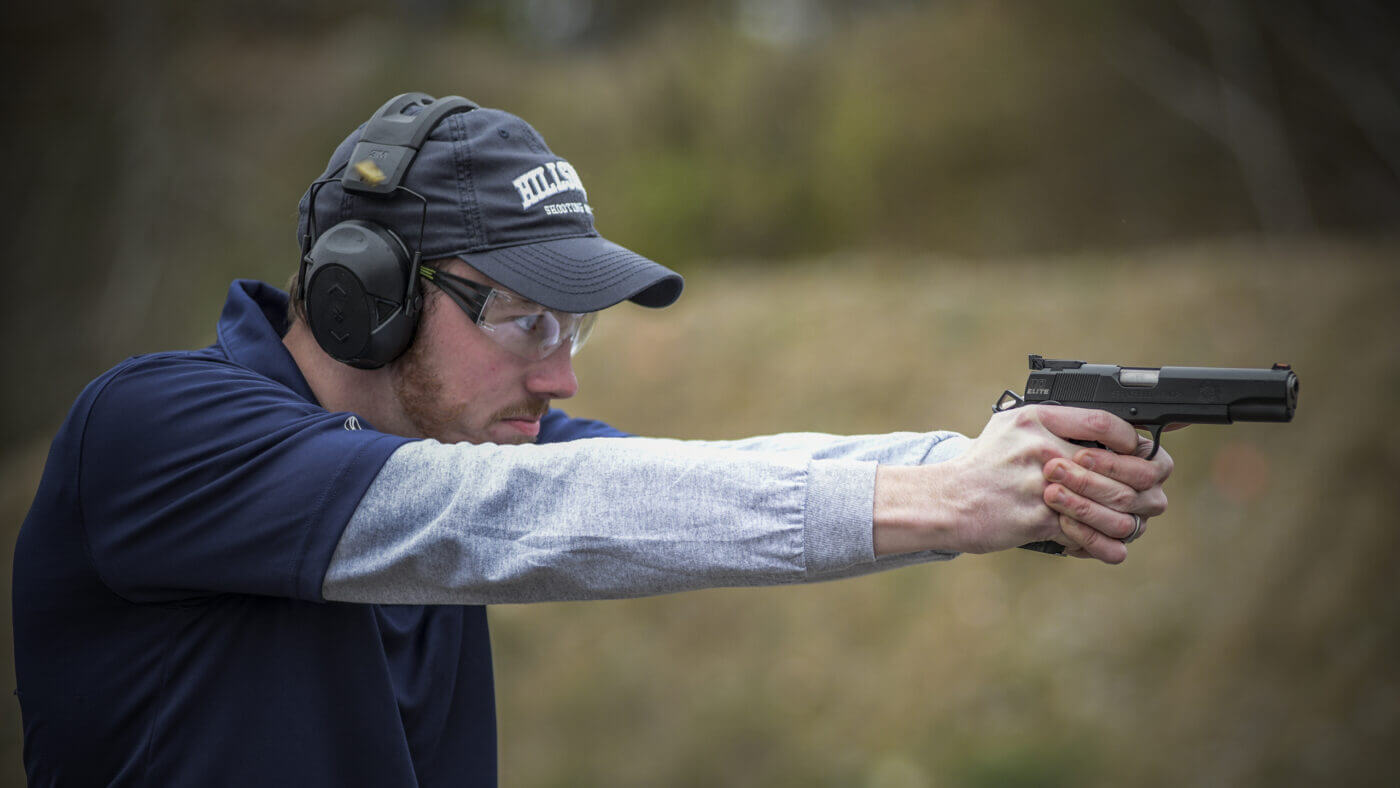
The arms are held straight with locked elbows creating the shape of an isosceles triangle.
This is not a push-pull grip.
It has one clear disadvantage; its front-to-rear stability is troublesome for many shooters.
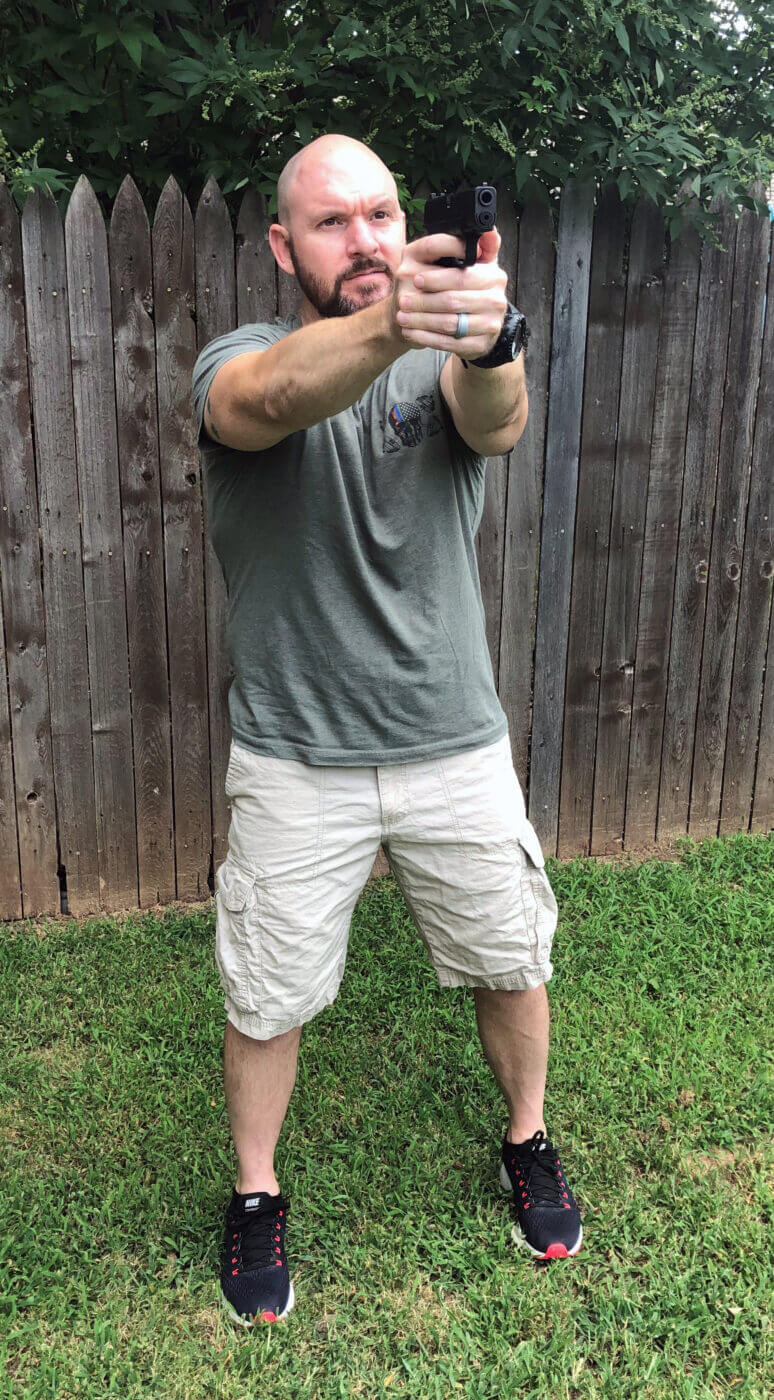
This can be easily remedied by slightly modifying the stance to a Power Isosceles Stance.
Weaver Stance
The Weaver Stance is an aggressive, two-handed shooting position with staggered feet.
The strong side foot should be positioned at a 45-degree angle facing outward.
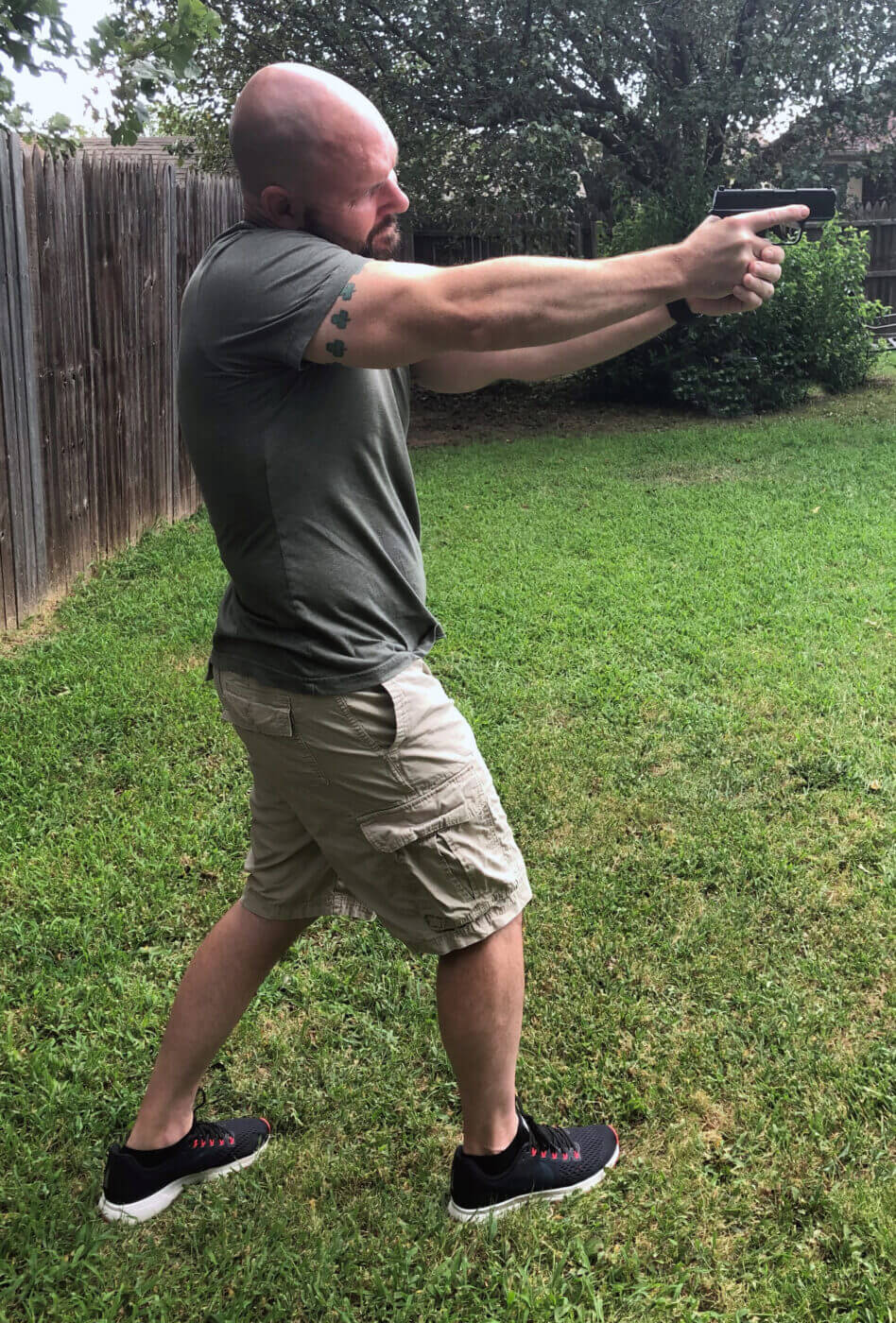
This stance incorporates a push-pull grip and bent elbows.
The strong-side arm is slightly bent and angled away from the body pushing on the gun.
The support arm elbow is bent downward at a 45-degree angle and pulls the gun toward your body.
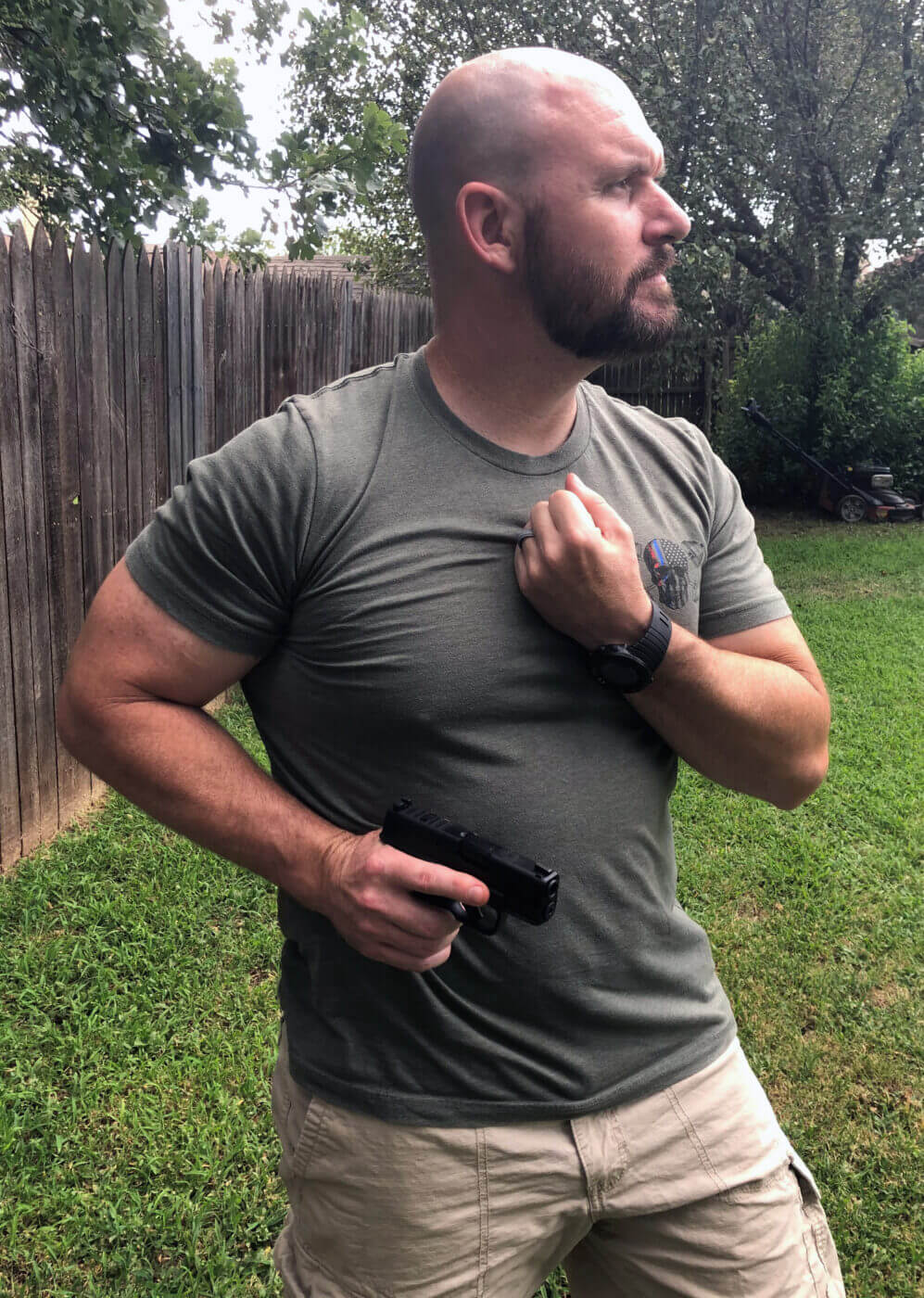
There are two clear advantages to the Weaver.
The Weaver does have its disadvantages.
The bent elbows apply the force of the recoil on the wrists, limiting recoil control.
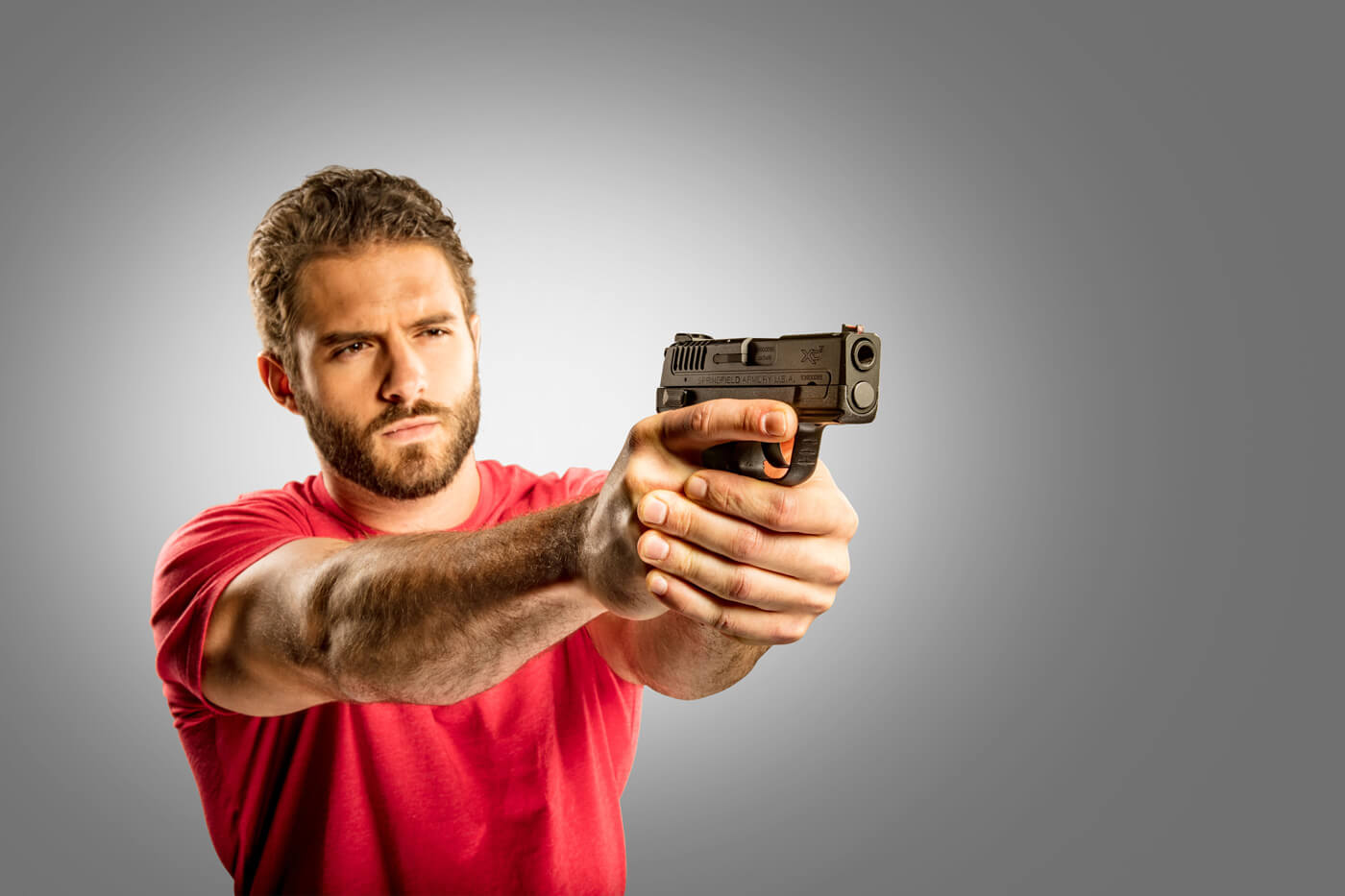
The Chapman Stance
The Chapman Stance is amodified Weaver Stancewith a more relaxed and vertical posture.
Featuring a few other small differences, the Chapman offers a narrower stance and fully extended strong side arm.
Many experts consider the Chapman to be the most accurate two-handed stance available to a skilled shooter.
This stance allows shooters to get their eyes on the sights and target quicker.
This is a fairly athletic stance, often compared to a boxer throwing a punch.
The disadvantages of this pistol stance revolve around the inherent problems of handling your pistol with one hand.
The recoil management is not ideal, especially with larger-caliber pistols, and this often results in accuracy issues.
It is designed to help the user prevent an assailant from gaining control of their weapon.
The gun is pointed straight forward, a few inches ahead of the abdomen.
The non-shooting hand is formed into a fist and tucked tightly into the chest.
The advantages of the Strong-Hand in one word is versatility.
If an attacker is at a greater distance, it makes it easy to shift to another shooting stance.
Final Thought
These five stances offer something different for everyone and each are good to know.
Its important to practice the different shooting stances to help develop muscle memory and basic fundamentals.
The next time you are at the range take some time and try some different stances.




